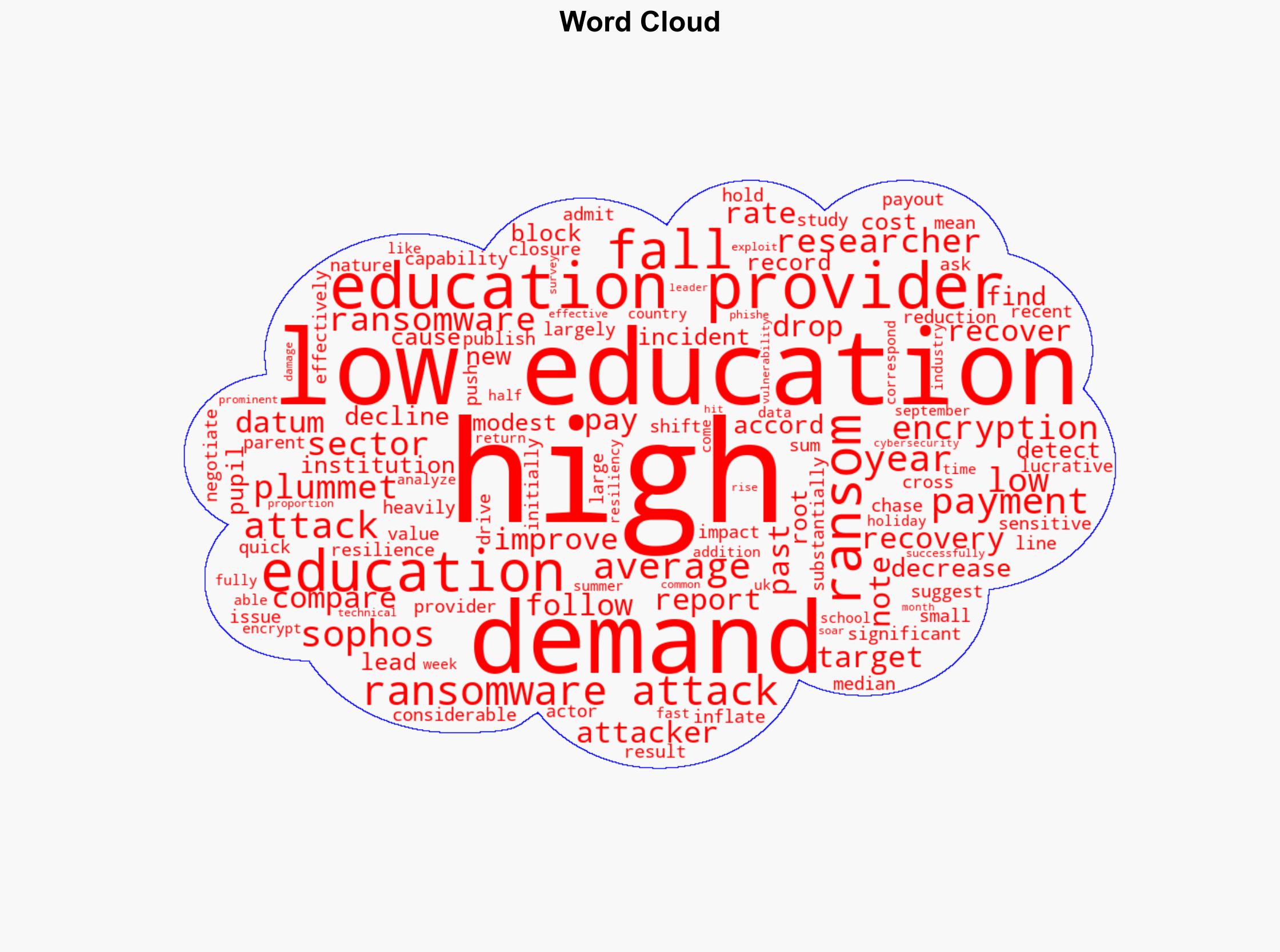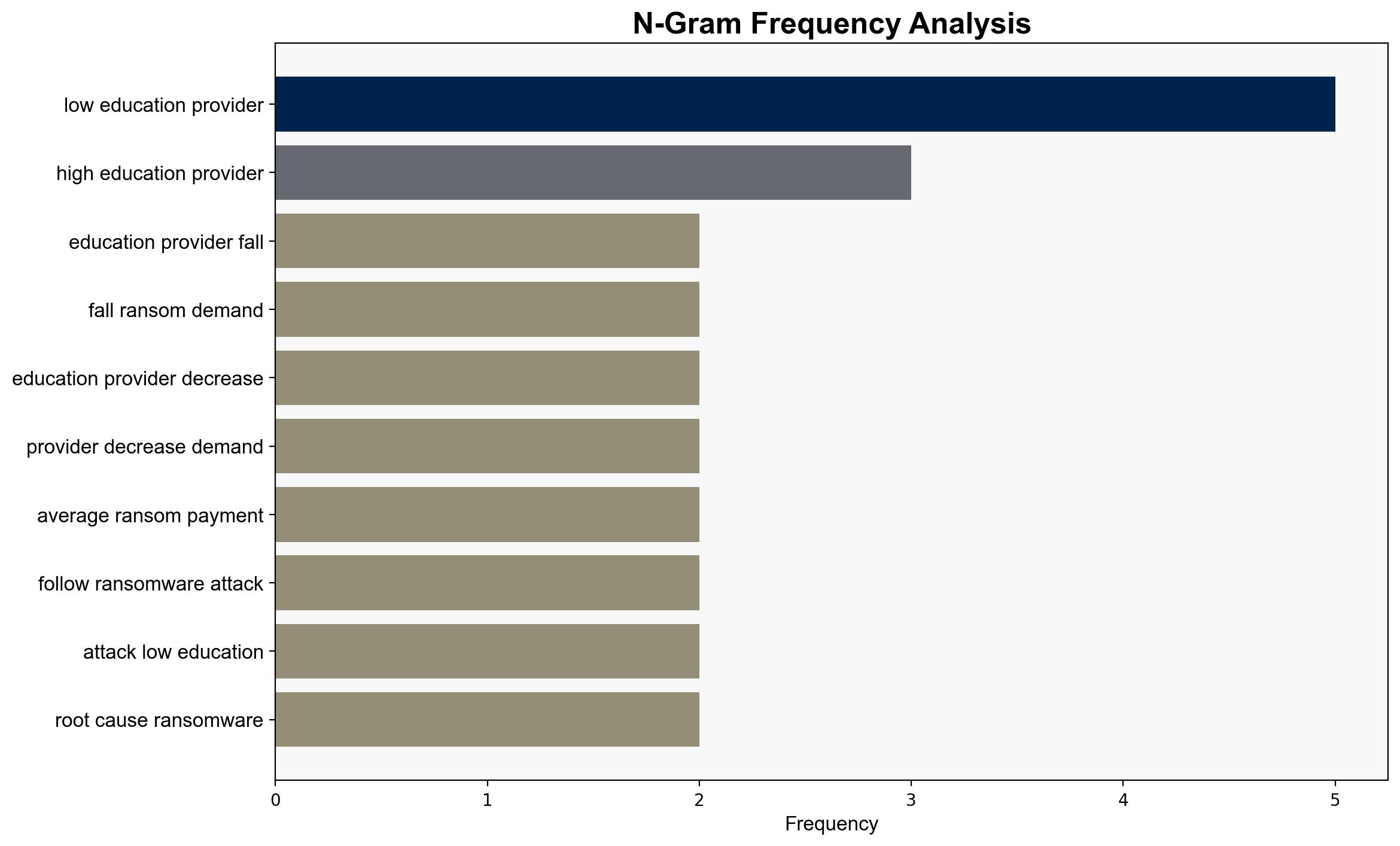Ransomware Payments Plummet in Education Amid Enhanced Resiliency – Infosecurity Magazine
Published on: 2025-09-10
Intelligence Report: Ransomware Payments Plummet in Education Amid Enhanced Resiliency – Infosecurity Magazine
1. BLUF (Bottom Line Up Front)
The decline in ransomware payments within the education sector is primarily attributed to improved cybersecurity measures and recovery capabilities. The most supported hypothesis is that educational institutions have enhanced their resilience, reducing the effectiveness of ransomware attacks. Confidence level: Moderate. Recommended action: Continue to bolster cybersecurity defenses and promote information sharing across the sector to maintain and enhance resilience.
2. Competing Hypotheses
Hypothesis 1: The reduction in ransomware payments is due to improved cybersecurity measures and recovery capabilities within the education sector. This includes better detection and blocking of attacks, as well as faster recovery times.
Hypothesis 2: The decrease in payments is primarily due to a strategic shift by attackers towards targeting smaller, less lucrative institutions, resulting in lower ransom demands and payments.
Using the Analysis of Competing Hypotheses (ACH) 2.0, Hypothesis 1 is better supported by the evidence, particularly the reported improvements in detection, blocking, and recovery capabilities. Hypothesis 2 is less supported, as the shift in attacker focus is suggested but not conclusively evidenced by the data.
3. Key Assumptions and Red Flags
Assumptions for Hypothesis 1 include the belief that educational institutions have universally adopted improved cybersecurity practices. For Hypothesis 2, it assumes attackers have intentionally shifted focus due to perceived lower risk or higher success rates with smaller targets.
Red flags include potential bias in reporting improvements, as institutions may overstate capabilities. Additionally, the lack of detailed data on attacker motivations and strategies presents a blind spot.
4. Implications and Strategic Risks
The decline in ransomware payments suggests a positive trend in cybersecurity resilience. However, the potential for attackers to adapt and exploit new vulnerabilities remains a strategic risk. The economic impact of ransomware attacks could shift if attackers target other sectors or employ more sophisticated methods. Geopolitically, increased resilience in education could prompt attackers to focus on less prepared regions or sectors.
5. Recommendations and Outlook
- Continue investing in cybersecurity infrastructure and training for educational institutions.
- Encourage collaboration and information sharing within the sector to identify and mitigate emerging threats.
- Scenario-based projections:
- Best Case: Continued decline in ransomware payments as resilience improves.
- Worst Case: Attackers develop new methods that circumvent current defenses, leading to increased payments.
- Most Likely: Gradual improvement in resilience with occasional successful attacks as attackers adapt.
6. Key Individuals and Entities
No specific individuals are mentioned in the report. Key entities include educational institutions, cybersecurity firms like Sophos, and ransomware groups.
7. Thematic Tags
national security threats, cybersecurity, counter-terrorism, regional focus





